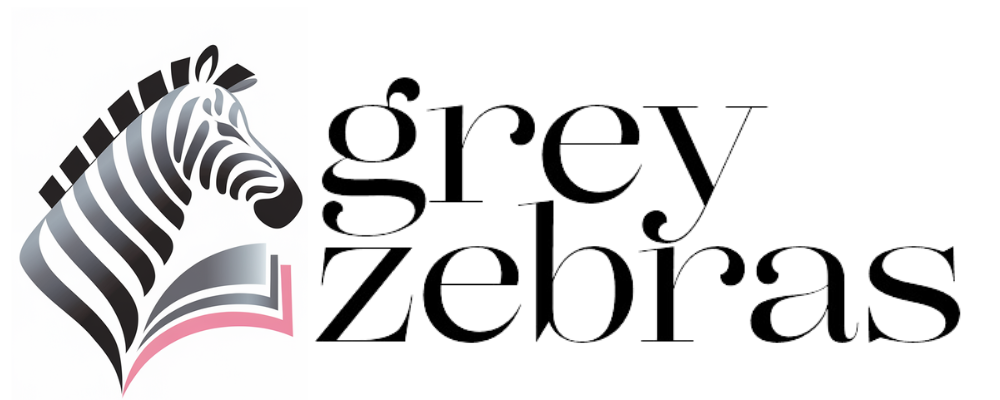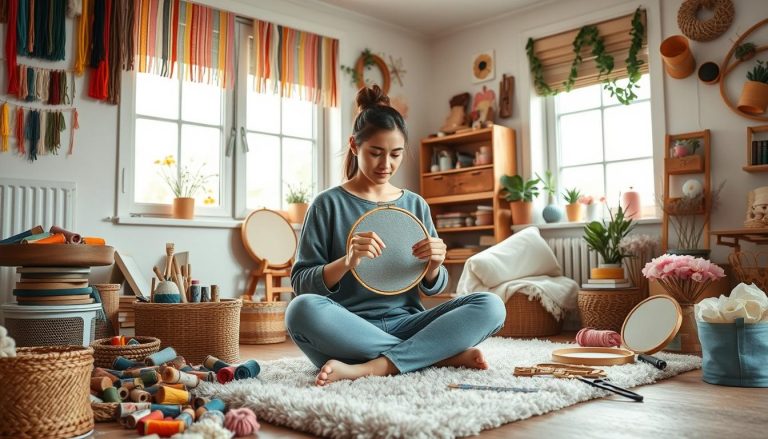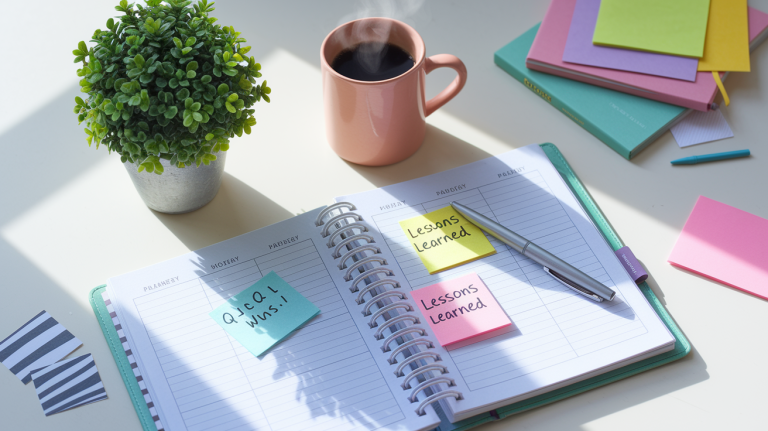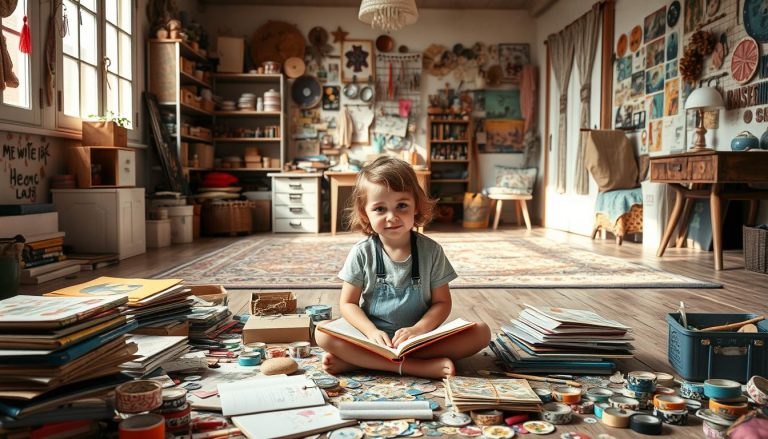Junk Journaling for Beginners: Get Creative with Repurposed Materials
Welcome to the world of junk journaling. It’s a fun and creative hobby that lets you use old materials in new ways. As a beginner, you’re starting a journey that boosts your creativity and helps you keep memories.
When you start a junk journal, you can show your unique style and keep special moments safe. This art is all about trying new things and enjoying the process. It’s perfect for those who want to explore their creativity.
As you start your junk journaling adventure, you’ll find happiness in making old things beautiful again. For more ideas and materials, check out our Etsy Shop at https://thegreyzebragifts.etsy.com.
Key Takeaways
- Discover the basics of junk journaling and its benefits
- Learn how to repurpose materials for your journal
- Get tips for starting your first junk journal
- Explore various techniques to enhance your journaling experience
- Find resources for materials and inspiration
Understanding the Basics of Junk Journaling
Junk journaling is all about creativity and sustainability. It turns waste into beautiful keepsakes. It teaches us to see old materials in new ways.

What is Junk Journaling?
Junk journaling is making unique journals from recycled stuff like old books and magazine cutouts. It’s a way to be creative and help the planet. As more people join, they share their ideas and skills.
“The art of junk journaling is turning the ordinary into something amazing,” says a famous artist. This shows how it’s both creative and good for the environment.
Key Materials You Can Use
Junk journaling is all about using different things. You can find:
- Old book pages and music sheets
- Magazine cutouts and newspaper clippings
- Ticket stubs, postcards, and other small items
- Handmade papers and fabric scraps
- Natural things like leaves and flowers
You can find these items at home, thrift stores, or craft shops. This makes junk journaling easy for anyone to try.
Benefits of Junk Journaling
Junk journaling has many good points:
- It helps reduce waste by using old materials
- It boosts your creativity and lets you express yourself
- You get to make a journal that’s truly yours
- It’s a calming activity that helps you relax
By doing junk journaling, you make something beautiful and help the planet at the same time.
Getting Started: Tools and Supplies
Starting a junk journaling journey needs some basic tools and supplies. You’ll need to gather different materials and learn how to use them well.
Essential Tools for Your Junk Journal
The heart of junk journaling is the tools you use. Scissors, glue, and various papers and embellishments are key. Scissors help cut paper, photos, or other items to size. A good glue is vital for sticking things together without harming your journal.
You’ll also need a craft mat or cutting board to protect your work area. A ruler or straightedge is for drawing straight lines. And a bone folder or similar tool is for creasing and smoothing papers.
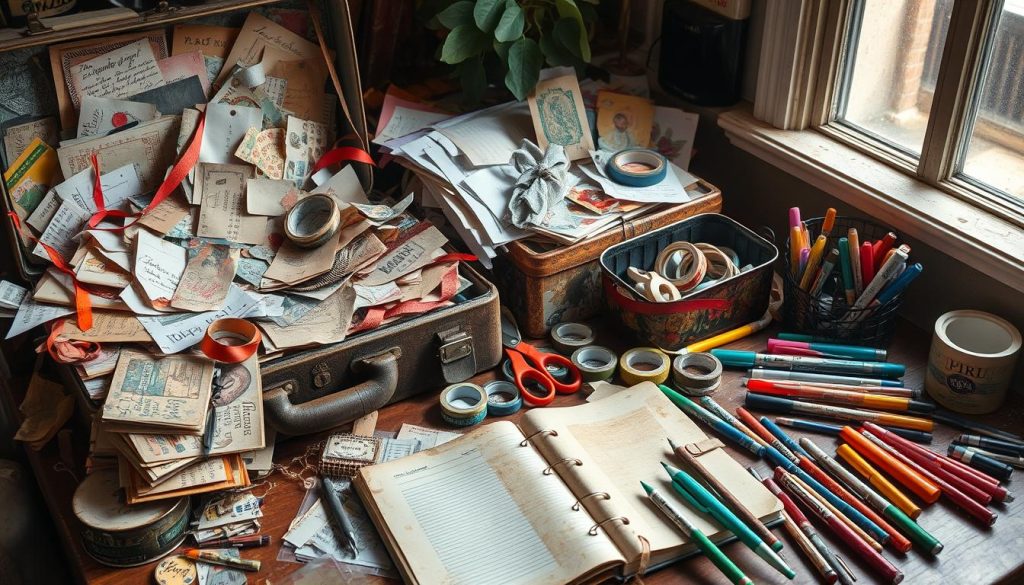
Where to Source Repurposed Materials
Finding repurposed materials is a fun part of junk journaling. You can look at thrift stores, your own home, or online marketplaces. Thrift stores have unique papers, fabric scraps, and embellishments. Your home is full of materials like old postcards and photographs.
Online marketplaces and craft stores offer a wide range of materials. You can also swap materials with friends or join a junk journaling community to get more.
| Material | Source | Use |
|---|---|---|
| Old postcards | Thrift stores, home | Backgrounds, embellishments |
| Newspaper clippings | Home, online | Backgrounds, journaling |
| Fabric scraps | Thrift stores, home | Embellishments, pockets |
Creating a Comfortable Workspace
A comfy and organised workspace is key for enjoying junk journaling. Make sure your space is well-lit and has enough storage for your supplies. A craft cart or storage bins can keep things tidy and easy to find.
Being comfortable is also important. Use a comfortable chair and a spacious work surface to spread out your materials. This helps you stay focused and creative while making your journal.
Techniques to Inspire Your Creativity
Junk journaling is all about mixing and changing old materials. It’s a journey of trying new things, making mistakes, and learning from them. This process is as vital as the final piece you create.
Collage: Combining Fun and Function
Collage is key in junk journaling. It lets you mix different things to make something new. You can layer papers, fabric, and more to get a cool, textured look. Start by collecting old magazine cutouts, scrapbook paper, and fabric scraps.
Tips for Creating a Great Collage:
- Begin with a base layer that sets the mood for your page.
- Play with textures and colours to add depth.
- Make sure your composition is balanced by placing elements wisely.
Using Textures and Layers
Textures and layers add depth to your journal. Mixing materials makes it feel real, inviting you to touch and explore. Try using burlap, lace, or fabric for different textures.
Layering Techniques:
- Start with a solid base, like cardstock.
- Add layers of paper or fabric, building up the texture.
- Use adhesive to keep your layers in place.
Incorporating Writing and Memories
Adding your own writing and memories makes your journal special. Use journal prompts or write down your thoughts. Include things like ticket stubs, postcards, or photos to tell your story.
“The journal is a place where you can release your thoughts and emotions, allowing you to process and reflect on your experiences.”
Here’s a table with ideas and prompts for writing and memories:
| Memory Type | Journaling Idea | Materials to Use |
|---|---|---|
| Travel Memories | Write about a memorable trip | Ticket stubs, postcards, maps |
| Personal Achievements | Reflect on your accomplishments | Certificates, photos, journaling |
| Daily Reflections | Record your daily thoughts and gratitudes | Journaling, stickers, coloured pens |
By using these techniques, you’ll boost your creativity and make a unique, meaningful journal.
Building Your First Junk Journal
Now you know the basics of junk journaling and some creative techniques. It’s time to start making your first journal. This involves several key steps to ensure your journal is both enjoyable to make and meaningful.
Planning the Structure
Start by planning your journal’s structure. Decide on the size, the number of pages, and the overall theme. For beginners, a simple structure is best. Use a mix of blank and grid paper to add variety.
Adding Personal Touches
Adding personal touches and themes makes your junk journal unique. Include memorabilia, photographs, and other personal items that fit your theme. This makes the journal more meaningful and boosts your creativity.
Maintaining Consistency
To keep enjoying your journal, set aside time to work on it. Try different techniques and don’t worry about mistakes. For beginners, remember that consistency is key to improving and enjoying the process. By following these steps, you’ll create a beautiful junk journal that shows your personality and creativity.
